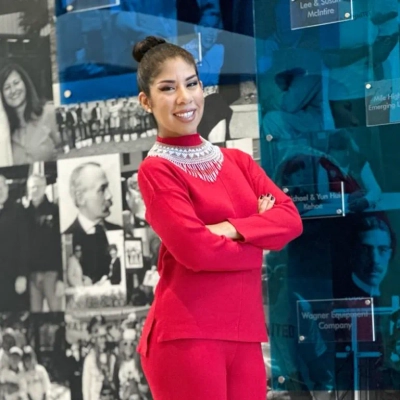7 Vulnerability Exercises That Can Dramatically Deepen Intimacy in Your Relationship
Many couples struggle to move beyond surface-level conversations, but specific vulnerability exercises can transform relationships from the inside out. Relationship experts have identified seven powerful practices that help partners break down emotional walls and create genuine connection. These structured activities range from sharing raw emotions through journals to witnessing each other's deepest fears without judgment.
Weekly Game Film Review Strengthens Partnership
My wife and I implemented a weekly 'Game Film Review' for our relationship. Every Sunday (after football), we sit down and talk through the previous week's wins and losses. We talk arguments or moments of disconnection and strive to understand each other's points of view. We analyze what went right, what went wrong, and how we can adjust our strategy next week. It prevents the slow build up and forces consistently productive, forward-looking conversations.
We agreed on on rule upfront. We are on the same team, and the goal is to win together. We aren't opponents in a debate, and whenever it feels like we are we have to step back and remind ourselves. We're partners trying to improve our collective performance. We have a shared objective, and that makes it beneficial to admit a mistake or point out a problem. It's all in service of helping our collective team succeed.

Share Raw Emotions Through Feeling Journals
A powerful vulnerability exercise that can dramatically deepen intimacy in a relationship is sharing a "feeling journal." The idea is to both write down and share a range of emotions you've experienced throughout the week—especially those that are often left unspoken, like fear, shame, or sadness. By doing this, you create a shared space where raw, honest feelings are welcomed, helping both partners open up on a deeper emotional level.
To create the safety needed for this exercise, it's important to establish a nonjudgmental environment where both people feel heard and validated. This means committing to active listening, avoiding interrupting or trying to "fix" the emotions being shared, and offering reassurance and empathy. Setting clear expectations for confidentiality and patience also fosters a sense of trust. Over time, this practice can lead to a more profound connection, as it allows both partners to express themselves without fear of rejection.

One Truth One Fear Exercise Builds Trust
We tried something called the "one truth, one fear" exercise. Every night for a week, we'd each share one thing we believed about our relationship and one thing that scared us. No responses allowed in the moment—just listening. It sounds simple, but saying things like "I feel safe with you" right next to "I'm afraid you'll stop seeing me the same way" hits differently. The safety came from letting silence do the work. No judgment, no advice, no fixing. Just presence. By the end of the week, the conversations got easier, and the honesty felt natural. It wasn't therapy; it was trust, built one small confession at a time.

Worst-Case Scenario Audit Externalizes Shared Fears
The vulnerability exercise that dramatically deepened intimacy in my relationship was the "Worst-Case Scenario Audit." This exercise forces you to get incredibly honest about your biggest fears regarding the relationship—the things you avoid saying because you think they might end it, like admitting financial insecurity or exhaustion with a shared commitment.
We created the safety needed for this level of openness by treating the session like a high-level, non-judgmental business audit. We agreed upfront that no fear, no matter how irrational, could be used as an offensive weapon or be addressed with emotion. The goal was simply to define and quantify the risks, just as we do for Co-Wear. We gave the fear a name and a number.
This works because it moves the focus from personal fragility to shared competence. By externalizing the fear, we stopped being scared of each other and started collaborating against the common threats. It proved that the greatest intimacy is achieved not through vague romantic gestures, but through ruthless clarity and the mutual respect required to share your deepest operational vulnerabilities.

Truth Check-Ins Create Space for Honesty
We started doing "truth check-ins" once a week—just sitting down, phones away, and answering one question honestly: What's something I haven't said out loud this week? It sounds small, but it opened doors we didn't even realize were closed. Sometimes it was a frustration, other times just a worry or a quiet win. The safety came from one rule—no fixing, no defending, just listening. When you stop trying to respond and start hearing, the other person relaxes. That kind of space turns honesty from a risk into relief. It's not easy at first, but over time it builds the kind of trust that makes everything else stronger.

Witness Deep Isolation Without Interruption or Advice
We started with an exercise called "Share the Moment You Felt Most Alone." Each partner takes five minutes to describe a time of deep isolation—without interruption, advice, or reassurance. The other person only listens, keeping steady eye contact and open body language. The goal isn't to fix anything but to witness the story fully. It sounds simple, but the silence carries weight. After both share, we sit for another minute without talking, letting the quiet settle before reflecting on what we learned about each other.
Creating safety began long before the exercise itself. We agreed on boundaries—no judgment, no debate, no defensiveness. Each of us promised to stay curious even when discomfort rose. That mutual agreement made it possible to speak truths we had avoided. It shifted our connection from performing closeness to actually being known, and that difference has changed how we communicate every day.

Speak Unaccepted Truths With Presence and Grace
One of the exercises was easy but effective and included taking turns to say something we were afraid the other would not comprehend or accept. It was not about self-confession or self-problem. It was about being seen. We entered into an agreement not to interrupt, judge or advice but to be present. Initially, the silence was awkward, yet the more time we sat with them the more confidence pervaded the silence.
Formulating safety entailed putting limits in advance of us entering. Our group decided to have a quiet night and switch off our phones and pray that we would be honest and kind. That was the moment of grounding everything. It was not aimed at correcting one another but experiencing each other. The more we did the same, the less we had to protect ourselves. It was a re-membrance that intimacy does not develop by perfection but by the mutual imperfection grasped with grace.


